13 Best Herbal Tinctures For Osteoporosis
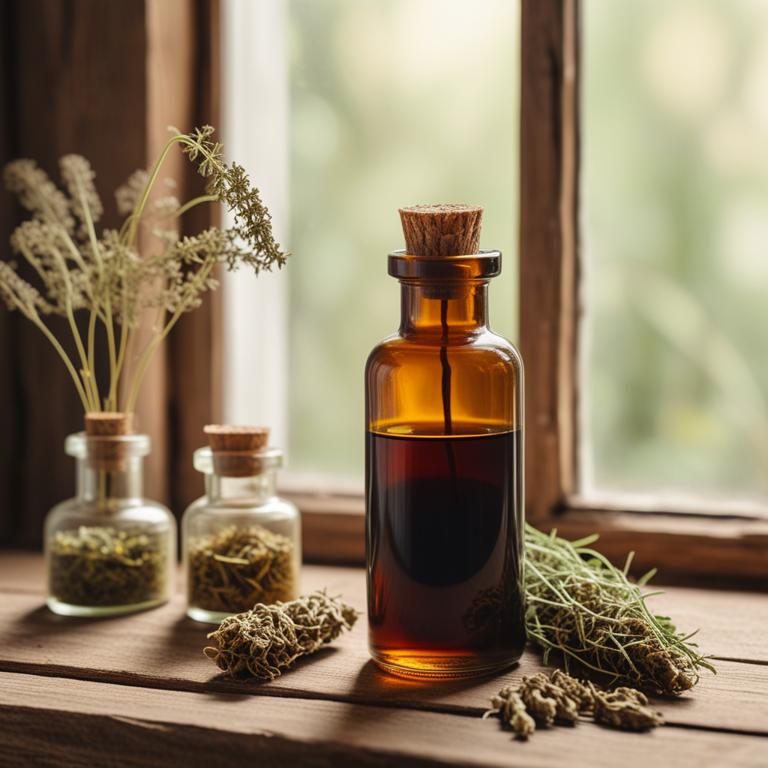
Herbal tinctures for Osteoporosis are liquid extracts made from plants that have been used for centuries to support bone health and alleviate the symptoms of osteoporosis.
These herbal remedies are beneficial in treating osteoporosis as they contain essential nutrients, minerals, and antioxidants that help to strengthen bones, improve bone density, and reduce the risk of fractures.
Examples of herbal tinctures that can be used to treat osteoporosis include ginseng, which helps to increase bone density by stimulating the production of osteoblasts, aloe vera, which promotes the absorption of calcium and vitamin D, and ashwagandha, which helps to reduce inflammation and stress that can lead to bone loss.
Other herbs such as horsetail, nettle leaf, and saw palmetto are also used to treat osteoporosis due to their ability to strengthen bones, improve bone density, and reduce the risk of fractures.
According to "Journal of traditional and complementary medicine", tinctures for osteoporosis may be effective in managing the condition by targeting different pathways in bone metabolism, including balancing osteoblasts and osteoclasts, anti-inflammatory, immunomodulatory, antioxidant, and estrogen-like functions, particularly those derived from multi-component herbal preparations.
Below there's a list of the 13 best herbal tinctures for osteoporosis.
- 1. Ginkgo biloba tinctures
- 2. Angelica sinensis tinctures
- 3. Curcuma longa tinctures
- 4. Panax quinquefolius tinctures
- 5. Silybum marianum tinctures
- 6. Cassia auriculata tinctures
- 7. Astragalus membranaceus tinctures
- 8. Centella asiatica tinctures
- 9. Cnidium officinale tinctures
- 10. Echinacea purpurea tinctures
- 11. Glycyrrhiza glabra tinctures
- 12. Rauvolfia serpentina tinctures
- 13. Zingiber officinale tinctures
Also you may be interested in...
TODAY'S FREE BOUNDLE
Herb Drying Checklist + Herbal Tea Shopping List + Medicinal Herbs Flashcards
Enter you best email address below to receive this bundle (3 product valued $19.95) for FREE + exclusive access to The Aphotecary Letter.
$19.95 -> $0.00
1. Ginkgo biloba tinctures

Ginkgo biloba tinctures have been traditionally used to treat osteoporosis due to their anti-inflammatory and antioxidant properties, which help to reduce bone resorption and promote bone formation.
The flavonoids and terpenoids present in ginkgo biloba, specifically bilobalide and ginkgolides, are believed to contribute to its therapeutic effects by inhibiting osteoclast activity and stimulating osteoblast function.
This herbal preparation has been shown to improve bone density and reduce the risk of fractures, making it a potential adjunctive treatment for osteoporosis.
The benefits of using ginkgo biloba tinctures to treat osteoporosis include reduced reliance on pharmaceutical medications and a lower risk of adverse effects, making it a promising natural alternative for patients seeking to manage their condition.
2. Angelica sinensis tinctures
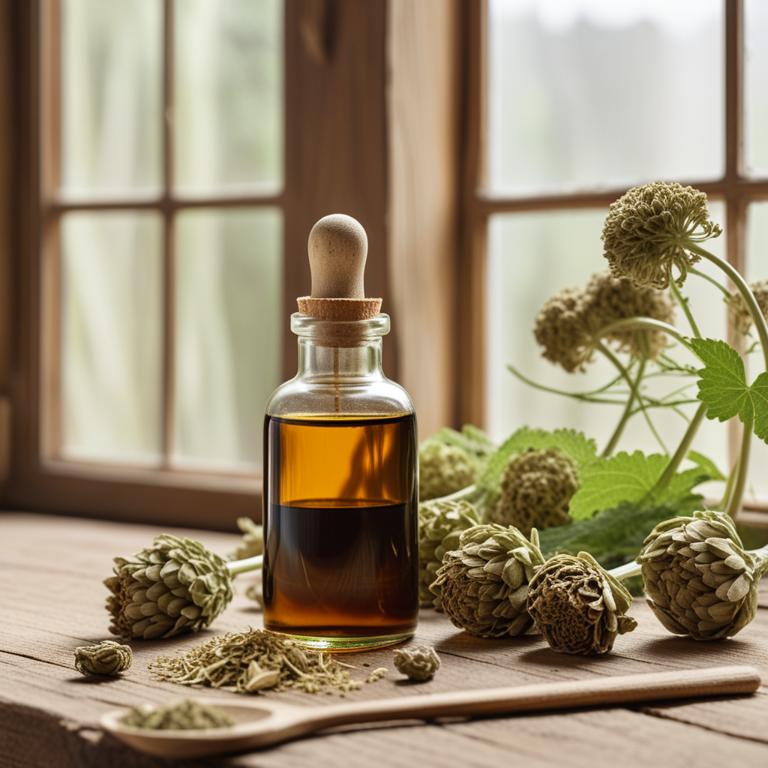
Angelica sinensis tinctures have been traditionally used to treat osteoporosis due to their anti-inflammatory and antioxidant properties, which help to reduce bone resorption and promote bone density.
This herbal preparation contains bioactive constituents such as ferulic acid, ligustilide, and butylphthalide, which have been shown to stimulate osteoblast activity and inhibit osteoclast activity, leading to improved bone health.
By promoting bone formation and reducing bone breakdown, Angelica sinensis tinctures can help to alleviate the symptoms of osteoporosis, including reduced bone density and increased risk of fractures.
The benefits of using Angelica sinensis tinctures to treat osteoporosis include reduced reliance on pharmaceutical medications and improved overall bone health, making it a promising natural alternative for managing this condition.
Related Study
According to "Frontiers in pharmacology", Angelica sinensis tinctures for osteoporosis may help prevent chronic excessive alcohol consumption-induced osteopenia in male mice by mitigating abnormal bone metabolism.
3. Curcuma longa tinctures

Curcuma longa tinctures have been traditionally used to treat osteoporosis due to their anti-inflammatory and antioxidant properties, which help to reduce bone resorption and promote bone formation.
The bioactive constituents of Curcuma longa, including curcuminoids and gingerols, help to inhibit the activity of osteoclasts, the cells responsible for bone breakdown, and stimulate the activity of osteoblasts, the cells responsible for bone growth.
By reducing inflammation and promoting bone growth, Curcuma longa tinctures can help to improve bone density and reduce the risk of osteoporotic fractures.
The benefits of using Curcuma longa tinctures to treat osteoporosis include reduced pain and discomfort, improved mobility, and a decreased risk of falls and fractures.
Related Study
According to "Biomedicine & pharmacotherapy = Biomedecine & pharmacotherapie", Curcuma longa tinctures for osteoporosis may exert antiosteoporotic activity by inhibition of RANKL and upregulation of OPG, thereby preventing bone loss from excessive resorption.
4. Panax quinquefolius tinctures
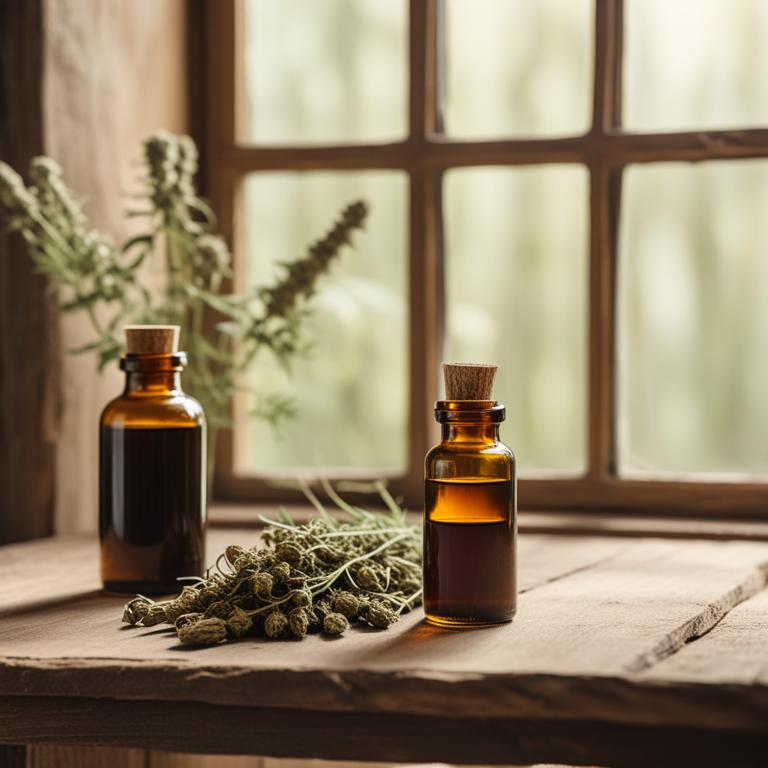
Panax quinquefolius tinctures have been traditionally used to treat osteoporosis due to their properties of promoting bone health and density.
The bioactive constituents, including ginsenosides, flavonoids, and polyphenols, help to stimulate osteoblast activity, inhibit osteoclast activity, and regulate bone metabolism.
By modulating the balance between bone formation and resorption, Panax quinquefolius tinctures can help to increase bone density and reduce the risk of fractures associated with osteoporosis.
The benefits of using Panax quinquefolius tinctures for osteoporosis treatment include improved bone health, reduced risk of fractures, and enhanced overall quality of life.
Related Study
According to "Yao xue xue bao = Acta pharmaceutica Sinica", Panax quinquefolius tinctures for osteoporosis may be effective when combined with a low dose of estrogen, as the study showed a synergistic effect in preventing bone loss, with an increase of 202% in bone volume and a decrease of 66% in bone turnover rate.
5. Silybum marianum tinctures

Silybum marianum tinctures have been traditionally used to treat osteoporosis, a condition characterized by brittle and porous bones.
The silymarin, a bioactive constituent of Silybum marianum, has antioxidant and anti-inflammatory properties that help to prevent bone loss and promote bone density.
This herbal preparation also contains flavonoids and phenolic acids, which have been shown to inhibit osteoclast activity, thereby reducing bone resorption and promoting bone formation.
The benefits of Silybum marianum tinctures in treating osteoporosis include improved bone density, reduced risk of fractures, and enhanced overall bone health.
Related Study
According to the study, Silybum marianum tinctures are a medicinal plant-based alternative therapy that has shown promising results in treating osteoporosis.
6. Cassia auriculata tinctures
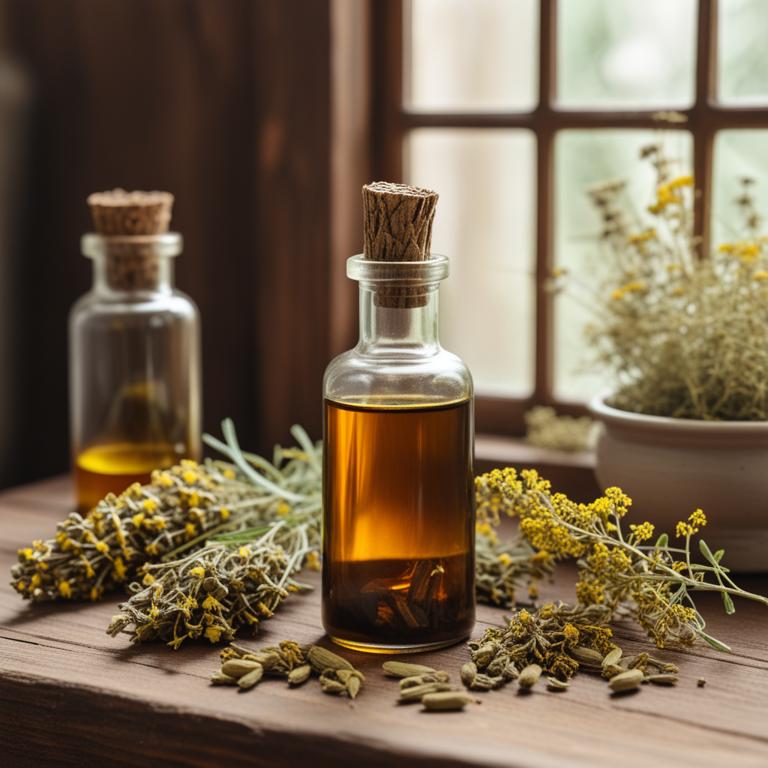
Cassia auriculata tinctures have been traditionally used to treat osteoporosis due to their anti-inflammatory and antioxidant properties, which help to reduce bone resorption and promote bone density.
The bioactive constituents present in Cassia auriculata, such as flavonoids and phenolic acids, play a crucial role in inhibiting osteoclast activity and stimulating osteoblast function, thereby helping to prevent bone loss.
The use of Cassia auriculata tinctures has been associated with improved bone health and reduced risk of fractures, making it a promising natural remedy for osteoporosis treatment.
Additionally, Cassia auriculata tinctures have been found to exhibit anti-osteoporotic effects by enhancing bone mineralization and density, thereby providing a natural alternative to conventional osteoporosis treatments.
7. Astragalus membranaceus tinctures

Astragalus membranaceus tinctures have been traditionally used to treat osteoporosis due to their anti-inflammatory and antioxidant properties, which help to reduce bone resorption and promote bone formation.
The bioactive constituents, including saponins and flavonoids, in Astragalus membranaceus tinctures may help to stimulate osteoblast activity, improve bone density, and reduce the risk of fractures associated with osteoporosis.
Regular use of Astragalus membranaceus tinctures may also help to alleviate symptoms of osteoporosis, such as joint pain and stiffness, by reducing inflammation and promoting bone health.
Furthermore, the antioxidant properties of Astragalus membranaceus tinctures may help to protect against oxidative stress and damage to bone tissue, making it a potentially beneficial herbal remedy for the treatment of osteoporosis.
Related Study
According to "Yao xue xue bao = Acta pharmaceutica Sinica", Astragalus membranaceus tinctures, in combination with a low dose of estrogen, showed synergistic effects in preventing osteoporosis induced by ovariectomy, achieving a significant increase in bone volume and a decrease in bone turnover rate.
8. Centella asiatica tinctures
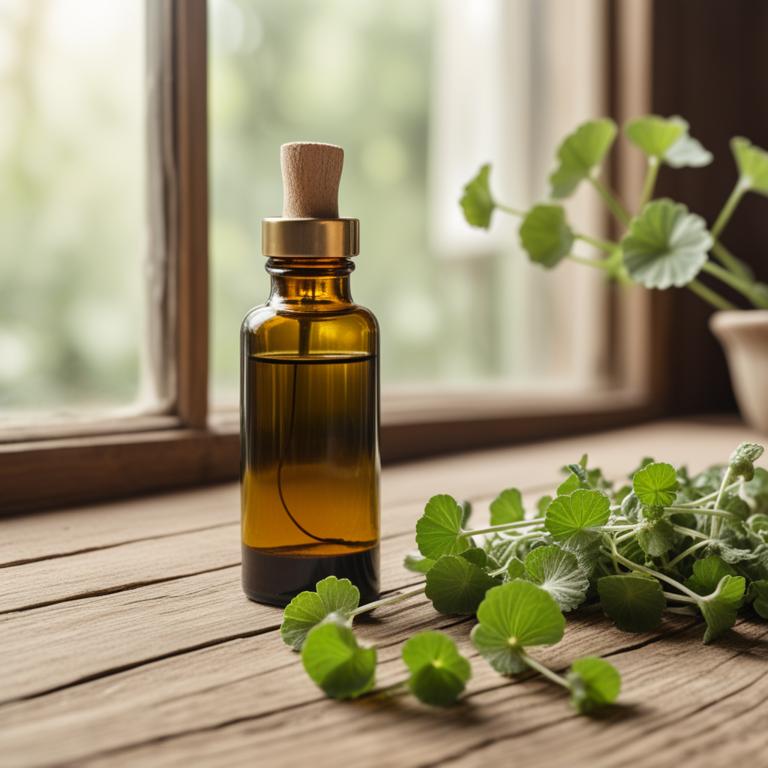
Centella asiatica tinctures have been studied for their potential in treating osteoporosis due to their anti-inflammatory and antioxidant properties.
The herbal preparation helps to treat this ailment by promoting bone health, increasing bone density, and preventing bone resorption.
The bioactive constituents of Centella asiatica, including triterpenoids and glycosides, are believed to contribute to its bone-protective effects.
Regular use of Centella asiatica tinctures may help to reduce the risk of osteoporotic fractures and alleviate related symptoms, making it a promising complementary therapy for individuals with osteoporosis.
Related Study
According to the study, Centella asiatica tinctures may be beneficial for osteoporosis as some plant components, including those from Centella asiatica, have shown potential in increasing osseointegration and promoting bone regeneration by modulating biomarkers and upregulating mediators involved in bone health.
9. Cnidium officinale tinctures

Cnidium officinale tinctures have been traditionally used to treat osteoporosis due to their anti-inflammatory, antioxidant, and bone-protective properties.
The tinctures help to treat this ailment by promoting bone growth, reducing bone resorption, and alleviating pain and discomfort associated with osteoporosis.
The bioactive constituents of Cnidium officinale, including coumarins, alkaloids, and polysaccharides, have been found to inhibit the activity of osteoclasts, which are responsible for bone breakdown, and stimulate the activity of osteoblasts, which are involved in bone formation.
Regular use of Cnidium officinale tinctures has been reported to improve bone density, reduce the risk of fractures, and alleviate symptoms of osteoporosis, making it a valuable herbal remedy for managing this condition.
10. Echinacea purpurea tinctures

Echinacea purpurea tinctures have been traditionally used to treat osteoporosis, a condition characterized by brittle and porous bones.
The properties of this herbal preparation help to treat osteoporosis by increasing bone density and reducing inflammation, which contributes to bone loss.
The bioactive constituents, including alkylamides, phenolic acids, and flavonoids, play a crucial role in treating osteoporosis by promoting osteoblast activity and inhibiting osteoclast activity, thereby reducing bone resorption.
The benefits of using Echinacea purpurea tinctures to treat osteoporosis include improved bone health, reduced risk of fractures, and enhanced overall well-being.
11. Glycyrrhiza glabra tinctures

Glycyrrhiza glabra tinctures, derived from the root of the licorice plant, have been used to treat osteoporosis due to their anti-inflammatory and antioxidant properties.
These properties help to reduce inflammation and oxidative stress in the body, which are contributing factors to bone loss and osteoporosis.
The bioactive constituents of Glycyrrhiza glabra, including glycyrrhizin and flavonoids, have been shown to promote bone formation and density by stimulating the production of osteoblasts and inhibiting the activity of osteoclasts.
By using Glycyrrhiza glabra tinctures, individuals with osteoporosis may experience improved bone health, reduced risk of fractures, and enhanced overall well-being.
Related Study
According to "Iranian journal of pharmaceutical research : IJPR", Glycyrrhiza glabra tinctures for osteoporosis may be beneficial as the ethyl acetate extract of licorice root, rich in phytoestrogen compounds, stimulated the proliferation and differentiation of human bone-marrow mesenchymal stem cells through estrogen receptor-mediated mechanism.
12. Rauvolfia serpentina tinctures
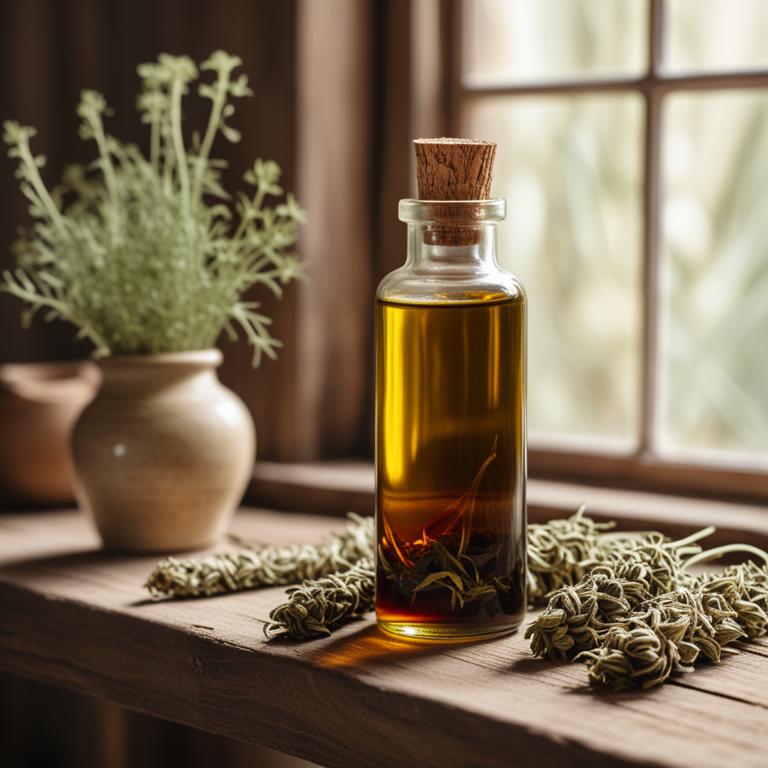
Rauvolfia serpentina tinctures have been traditionally used to treat osteoporosis due to their potential anti-inflammatory and antioxidant properties, which help to strengthen bones and prevent bone loss.
The bioactive constituents of Rauvolfia serpentina tinctures, including reserpine, yohimbine, and ajmaline, have been shown to stimulate bone formation and inhibit bone resorption, making it a promising herbal preparation for osteoporosis treatment.
By stimulating osteoblast activity and inhibiting osteoclast activity, Rauvolfia serpentina tinctures help to promote bone growth and density, thereby reducing the risk of fractures and osteoporotic-related complications.
Regular use of Rauvolfia serpentina tinctures may provide benefits such as improved bone health, reduced pain and inflammation, and enhanced overall quality of life for individuals with osteoporosis.
13. Zingiber officinale tinctures

Zingiber officinale tinctures have been traditionally used to treat osteoporosis due to their anti-inflammatory and antioxidant properties, which help to reduce bone resorption and promote bone density.
The bioactive constituents of Zingiber officinale, including gingerols and shogaols, have been shown to inhibit the activity of osteoclasts, the cells responsible for bone breakdown, thereby helping to prevent bone loss.
The anti-inflammatory properties of Zingiber officinale tinctures also help to reduce inflammation in the body, which is a known risk factor for osteoporosis.
By reducing inflammation and promoting bone density, Zingiber officinale tinctures may help to alleviate the symptoms of osteoporosis and prevent further bone loss.